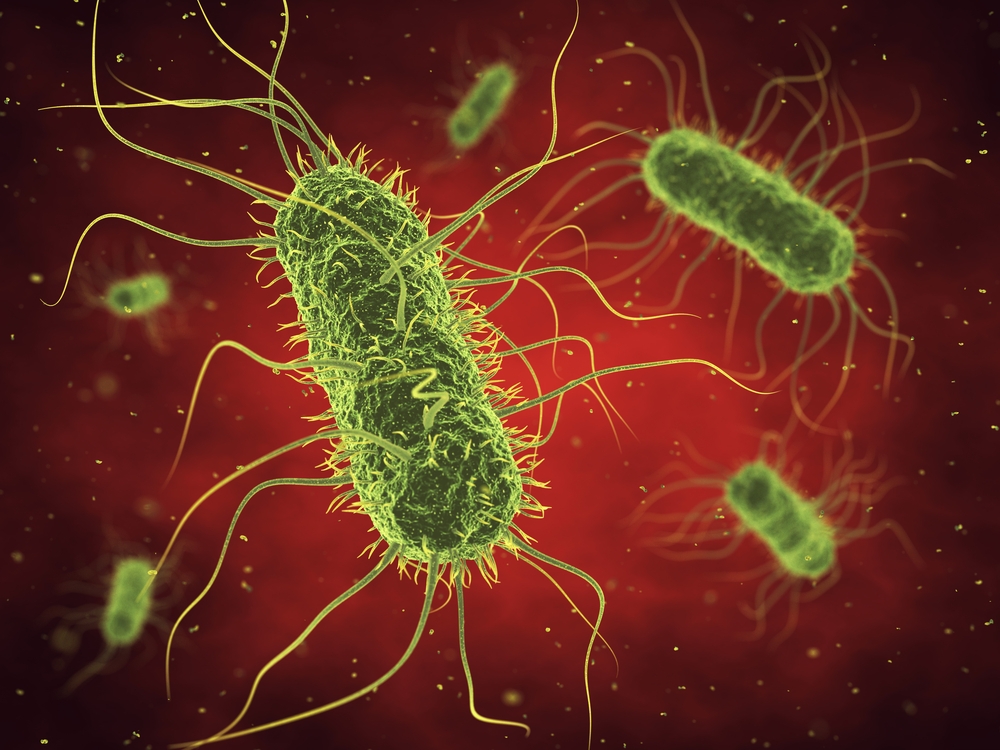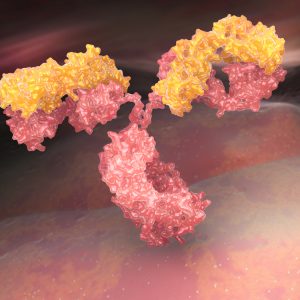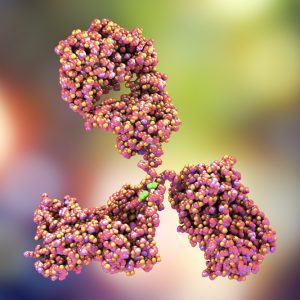SALMONELLA TYPHI HEMOLYSIN E PROTEIN
Salmonella typhi Hemolysin E protein is a recombinant antigen manufactured in E. coli cells for immunoassay development and other applications.
PRODUCT DETAILS – SALMONELLA TYPHI HEMOLYSIN E PROTEIN
- Recombinant Salmonella typhi Hemolysin E protein
- Approximately 34 kDa protein, expressed and purified from E. coli with His-tag
- Greater than 95% purity
- Presented lyophilized, buffer contains 20mM Na-carbonate Buffer, pH10
- Suitable for use in LFIA, ELISA and Western Blot
BACKGROUND
Salmonella enterica colonizes and infects a wide range of different organisms and causes a broad spectrum of diseases, such as gastroenteritis and bacteremia, as well as life-threatening conditions, such as typhoid fever. Typhoid fever is a fatal illness caused by Salmonella enterica serovar Typhi (S. typhi) with an estimated 22 million cases and 200,000 related deaths occurring worldwide each year.
The S. typhi hlyE gene (also called clyA or sheA) encodes a pore-forming protein with hemolytic and cytotoxic activities that are absent in other Salmonella enterica serovars such as Salmonella typhimurium (Oscarsson et al., 1999). HlyE is an essential virulence factor of Salmonella, Escherichia coli and other enteric bacteria and is required for survival of the bacteria within the host macrophage (Libby et al., 1994). HlyE acts by forming large, stable pores in target membranes upon contact with mammalian cells (del Castillo et al., 1997; vonRhein et al., 2006). It causes haemolysis of erythrocytes and has apoptogenic effects on human and murine monocytes/macrophages. Serological studies have shown that S. typhi and S. paratyphi A strains produce substantial amounts of HlyE during human infection (Oscarsson et al., 1999; Oscarsson et al., 2002).
Typhi HlyE has been found in the plasma of patients with S. typhi bacteremia and recent studies have identified that HlyE is an antigen that is capable of discriminating between typhoid patients and control subjects. The reactivity of different Ig isotypes (IgG, IgA and IgM) against recombinant HlyE has been shown and soluble recombinant HlyE is antigenic in both denatured and native forms. It can therefore be used as a diagnostic antigen in an ELISA format (Ong et al., 1994).
REFERENCES
- del Castillo FJ, Leal SC, Moreno F, del Castillo I. The Escherichia coli K-12 sheA gene encodes a 34-kDa secreted haemolysin. Mol Microbiol. 1997;25(1):107‐115.
- Libby SJ, Goebel W, Ludwig A, et al. A cytolysin encoded by Salmonella is required for survival within macrophages. Proc Natl Acad Sci U S A. 1994;91(2):489‐493.
- Ong EB, Anthony AA, Ismail A, Ismail A, Lim TS. Cloning, expression, and purification of the hemolysin/cytolysin (HlyE antigen) from Salmonella enterica serovar Typhi: potential application for immunoassay development. Diagn Microbiol Infect Dis. 2013;77(1):87‐89.
- Oscarsson J, Mizunoe Y, Li L, Lai XH, Wieslander A, Uhlin BE. Molecular analysis of the cytolytic protein ClyA (SheA) from Escherichia coli. Mol Microbiol. 1999;32(6):1226‐1238.
- Oscarsson J, Westermark M, Löfdahl S, et al. Characterization of a pore-forming cytotoxin expressed by Salmonella enterica serovars typhi and paratyphi A. Infect Immun. 2002;70(10):5759‐5769.
- vonRhein C, Hunfeld KP, Ludwig A. Serologic evidence for effective production of cytolysin A in Salmonella enterica serovars Typhi and Paratyphi A during human infection. Infect Immun. 2006; 74:6505-08.



